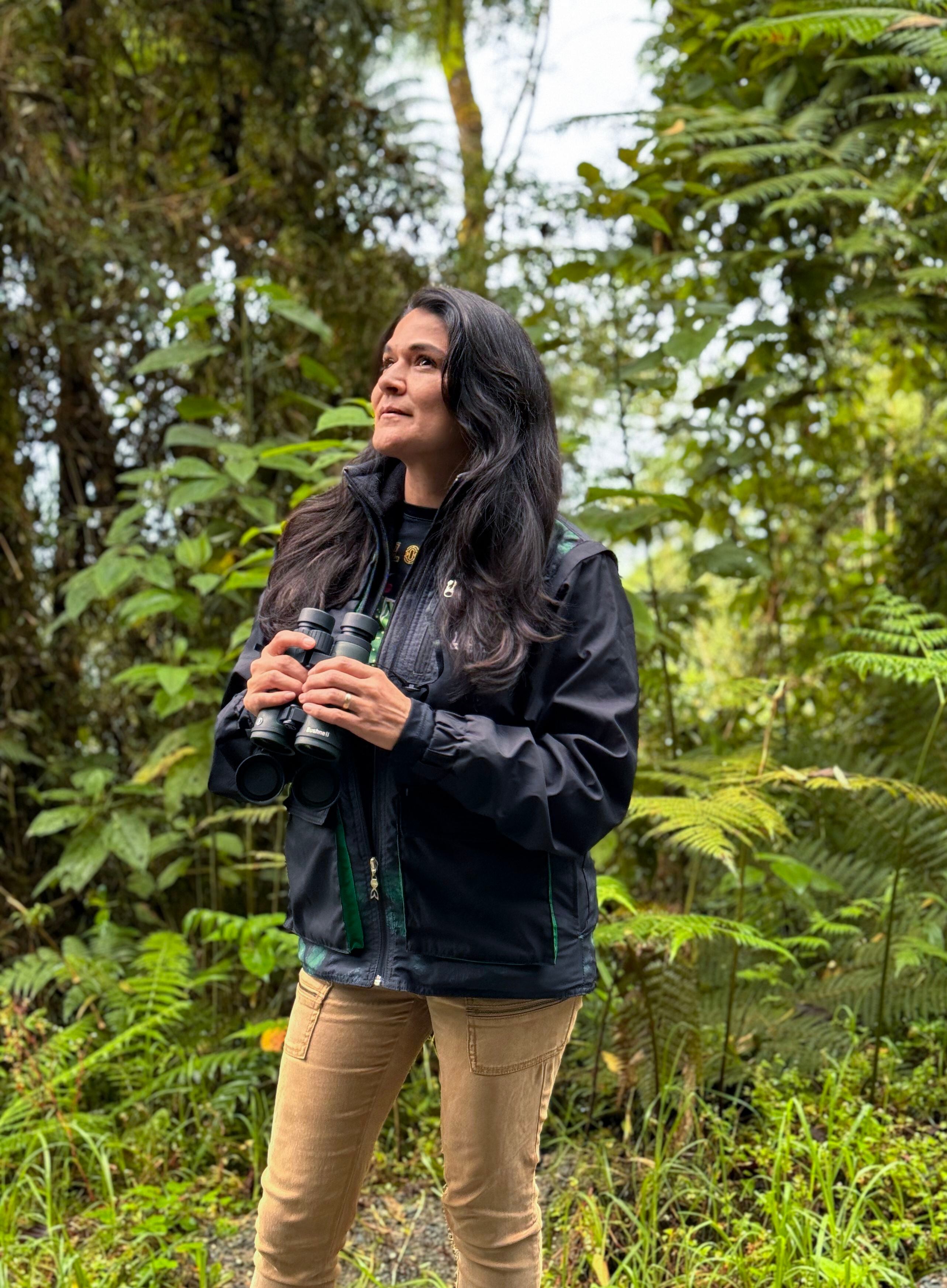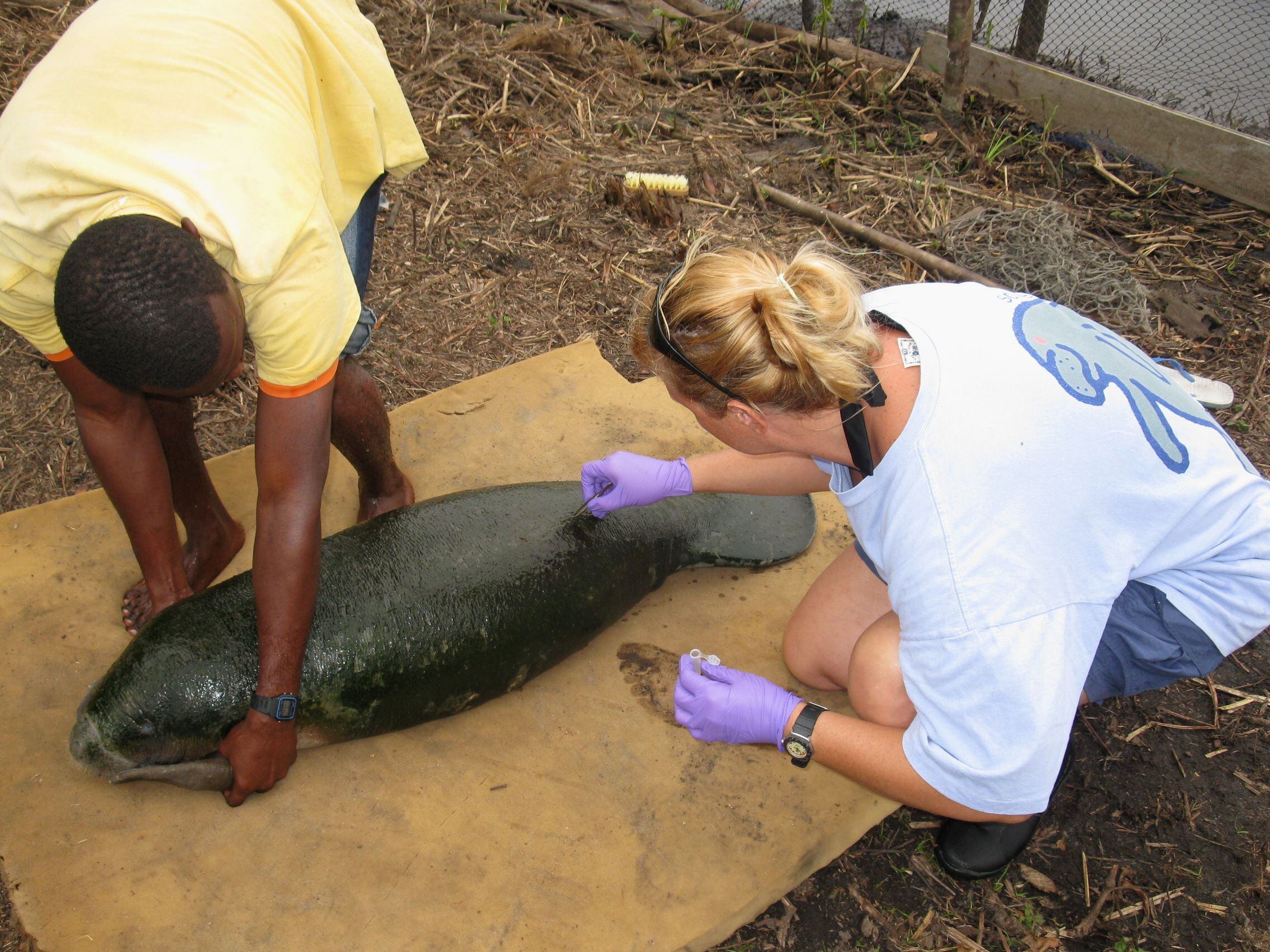Until a conservation organisation began searching for it, Lynch’s Colombian tree frog had not been seen for 36 years and was feared to have become extinct.
But thanks to an intensive nine-month search, supported by the Mohamed bin Zayed (MBZ) Species Conservation Fund, the creature was rediscovered in 2022 by the ProAves conservation group in the eastern Andes of Colombia.
For Sara Ines Lara, who worked as a civil engineer before founding and running ProAves, finding the critically endangered species again was a source of delight.
“It was the best feeling you can have as a conservationist … when we found it, your heart wants to explode with joy,” she said.
“There’s hope that nature is there, waiting for us to help and encouraging us to continue with our work.”
Worldwide support
The MBZ Species Conservation Fund has supported hundreds of projects across the world with modest grants targeted at protecting individual species.
Running for several years, ProAves’s work to find and protect the tree frog is part of a separate $4.5 million scheme run by the fund and financed by Mubadala, Abu Dhabi’s sovereign wealth fund, to support 10 projects.
ProAves is starting on two other projects in Colombia, involving the Colombian oak and the mountain grackle bird, while the remaining seven are in Indonesia, Thailand and Guinea.
“Thanks to the grant from the MBZ Species Conservation Fund and the support of Mubadala, we deployed a research team to try to find the frog where there were records before,” Ms Ines Lara said.
“That took a long time and multiple attempts. After nearly a year it was rediscovered, so far just at a single site – multiple individuals in a very small area. What we want to continue to do is to try to locate more sites.”
The area where the tree frog was found covers no more than 30 square metres and is at a higher elevation than the animal’s original habitat, leading ProAves to believe it has moved up to cooler areas due to climate change. Another threat, deforestation, means there is little habitat left for the animal.

Sara Ines Lara, executive director of ProAves, said finding the endangered frog was a source of delight. Photo: ProAves
Educating communities
A key priority has been to educate the local community on the importance of conserving the species.
“We started with the landowner and educated him and his whole family,” Ms Ines Lara said. “It’s very important to have the rural community engaged at all levels. They’re safeguarding the frog now that they know how unique and important it is.”
The group is working with local authorities and educating the wider community about the importance of conservation, with the ultimate goal of establishing a regional park to offer lasting protection.
Colombia was blighted for many years by armed conflict and while improvements in the security situation in recent years have been welcomed, they have potential consequences for nature, Ms Ines Lara said, because there is now more investment and development.
“Unfortunately this development, a lot doesn’t take into consideration how important some of these habitats are,” Ms Ines Lara said.
Another challenge is climate change, with water in creeks in the dry season falling to lower levels than many species are used to.
Ms Ines Lara, who is also the founder of Women for Conservation, which supports women working to protect wildlife and habitats, was recently in Abu Dhabi to take part in the World Environmental Education Conference.
Another participant was Dr Lucy Keith-Diagne, of the African Aquatic Conservation Fund (AACF), an organisation that runs another of the MBZ Species Conservation Fund and Mubadala projects.
The hunt for the African manatee
Dr Keith-Diagne, an American based in Senegal who is executive director of the AACF, is co-ordinating efforts to better understand where the African manatee is living in Guinea.
Manatees have been a lifelong love of Dr Keith-Diagne: as a child growing up in New Jersey in the north-east of the US, she learnt about the animals at school and came home to tell her parents that she would one day work to save them.
She was true to her word, completing a doctorate on Florida manatees before deciding she could make her biggest impact in West Africa, where the African manatee is found across many countries and habitats – near the coast, in flooded rainforests, in mangrove channels, and in rivers and lakes of the Sahel.
In the interior of Guinea, manatees are often not hunted because local people believe the animals were once human. But their existence is threatened by proposed dams, which could restrict their ability to move to deeper waters during the dry season.
Particularly on the coast, dangers include illegal hunting, mangrove destruction, pollution, industrial activity and being caught unintentionally by fishing vessels, known as by-catch.
“The coastal populations need urgent help; they’re being decimated by some of these threats,” Dr Keith-Diagne said.

Dr Lucy Keith-Diagne collects hair samples from a manatee in Gabon, on the African coast. Photo: Dr Lucy Keith-Diagne
Determining where populations are living is essential to conservation efforts but Guinea has “been something of a black hole for manatee research”.
Also, the animals – relatives of the dugong, which is found in UAE waters – are not easy to study: until a recent sighting, Dr Keith-Diagne had not seen a live, free-swimming manatee for about three years.
However, advances in technology, notably in genetics, mean it is now possible to determine whether manatees are present in an area by analysing water samples. In future it may even be able to estimate population sizes from water samples.
Looking at genetic differences can also indicate whether manatees in different areas are separated or are one large population.
In Guinea, as elsewhere in West Africa, formal records of where the animals are found are lacking, a trait the project aims to change.
In 2021, a total of 13 trainees were taken on as part of a three-year fellowship. Individually or in pairs, they have been learning as much as possible about manatees in a particular area, often by carrying out interviews with locals.
“What I wanted to do was train up a bunch of researchers who worked closely and made trust-building relationships with local communities so that they would learn from and work with them,” Dr Keith-Diagne said.
“They’ve assessed all the threats … we’ve now discovered manatees in five new rivers. No one has documented it before.”
The aim has been to understand what the problems for manatees are and what could be done to help them – and to take this knowledge to the government to secure better protection.
Getting the message across
The AACF aims to encourage the government to, for example, stop illegal killing and mangrove cutting on the coast. The organisation also plans TV and radio public-service announcements to educate the population about the animals.
Dr Keith-Diagne has been “so impressed” with the 13 fellowship recipients’ achievements and hopes they will spearhead efforts to conserve the manatees in their home country.
“I want them to take over this project and lead it,” she said. “Manatees are somewhat of a canary in the coal mine for freshwater systems. They’re not going to live in a highly polluted system. They’re indicators for other species as well – for fish and other river dwellers.”
Razan Al Mubarak, founding managing director of the MBZ Species Conservation Fund, said the preservation of the African manatee and the Lynch’s Colombian tree frog was “not just about saving these remarkable species”.
“It’s about maintaining the balance of ecosystems where every creature plays a pivotal role,” she said.
“These initiatives shine a light on the urgent need for conservation in areas facing severe threats, highlighting how interconnected our global biodiversity is.”
It is “imperative” that action is taken now to safeguard these species and ensure a healthier planet for future generations, she added.
News Related-
AWS and Clarity AI to use generative AI to boost sustainable investments
-
Ref Watch: 'Enough' of a foul to disallow Man City goal vs Liverpool
-
Day in the Life: Ex-England rugby star on organising this year's Emirates Dubai Sevens
-
Pandya returns to MI, Green goes to RCB
-
Snowstorm kills eight in Ukraine and Moldova, hundreds of towns lose power
-
‘This is why fewer Sikhs visiting gurdwaras abroad’: BJP after Indian envoy heckled in Long Island
-
Inside a Dubai home with upcycled furniture and zero waste
-
Captain Turner aims for Pitch 1 return as JESS bid to retain Dubai Sevens U19 crown
-
No Antoine Dupont but Dubai still set to launch new era for sevens
-
Why ESG investors are concerned about AI
-
Your campsite can harm the environment
-
Mubadala, Saudi Fund deals on US radar for potential China angle
-
Abu Dhabi T10 season seven to kick off with thrilling double-header
-
Eight climate fiction, or cli-fi, books to consider before Cop28
